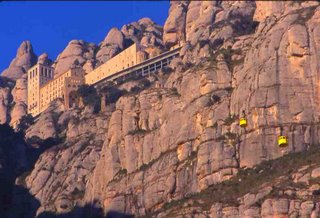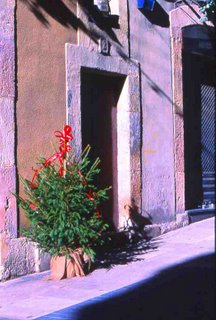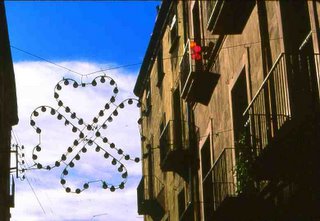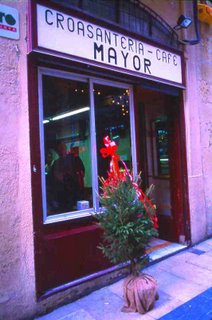
With my parents, our family of four had rented an apartment in the
El Capistrano complex in
Nerja, Spain, just east of Malaga on the Costa del Sol. Our two-week vacation was filled with sun, history, fabulous food and more than passable three-dollar-a-bottle wine, which you could buy everywhere, even at gas stations.
I'd planned a host of day trips, and even though some destinations were far enough to require being on the road not long after dawn, everybody was game, and we visited places like
Granada and its magical Alhambra, gleaming gold against the snow-dusted Sierra Nevada;
Sevilla and the ornately tiled Plaza de Espana, one of the world's great public spaces; the high, white villages of the remote
Alpujarras mountain range, where curing hams hung from the rafters of barns and houses;
Ronda, where tourists line the Puente Nueve for the dizzying view of 300-foot-deep El Tajo gorge that falls away under your feet.
One morning we set out early for
Gibraltar, driving west on the
N-340, a road that parallels the sea and delivers the best and worst of Spain's Mediterranean coast: Quiet beaches, fishing towns and Moorish castles and watchtowers punctuated here and there by the concrete, high-rise hell (unless you like that sort of thing) of megaresorts like
Torremolinos and
Fuengirola.
We'd been on the road about two hours when we reached
Tarifa and got our first glimpse of Gibraltar in the distance. The mighty rock looked like the great, gunmetal hull of a sinking ship. We came, finally, to the town of La Linea de la Concepcion, which sits at the border between Spain and Gibraltar, a British territory.
As we neared the Rock, I realized I'd forgotten my family's passports, which were locked up back at the apartment. I announced this grievous mistake to my fellow travelers and waited for them to justifiably take my head off. But they were gracious. They even laughed.
My parents had their passports, and I suggested they take the car into Gibraltar and enjoy themselves -- at least see the
Barbary Apes -- while we occupied ourselves in La Linea.
They didn't want to go alone, so we decided to drive to the border and see if we could sweet talk our undocumented way onto the Rock. We queued up with a score of other cars at the crossing and made our way to the checkpoint. I told the border guard our story and asked if there were any possibility of our making a quick foray into the territory.
The border guard was very kind. He felt genuinely bad that I'd done such a stupid thing and had ruined everyone's road trip. "No, I'm sorry," he said. "It's not possible. And even if I were to let you in, there is no guarantee that the Spanish would permit you to reenter their country after your visit." Right. We'd forgotten about the small matter of the return. Being stuck on Gibraltar would likely lose its novelty after 15 minutes.
Since I was in the border crossing line and there were a dozen cars behind me, the only way for us to leave was to drive through the crossing and turn around. The guard watched us closely as I turned the car and went back into Spain. Technically, we were in Gibraltar, for about four seconds.
We spent the next hour moving around La Linea, looking at Gibraltar from all possible angles so we could pretend we'd really "seen" it. Every once in a while, one of us would point to a spot on a cliff and say, "Look! I see things moving up there! Must be the apes!" We thus convinced ourselves that we'd seen the famed simians, thereby helping to make our virtual visit to the Rock of Gibraltar and the hundreds of miles required to get there and back worthwhile.
We finally set out on the long road back to Nerja, stopping at a seaside restaurant in Tarifa for lunch. I asked for a table by the window, "
con vista de Gibraltar, por favor," and we sat admiring the distant Rock as we ate platters of
boquerones, fresh, white anchovies marinated in lemon juice and olive oil.
Meal over, we got back in the car and watched Gibraltar disappear in the rearview mirror.
www.LoriHein.com
















